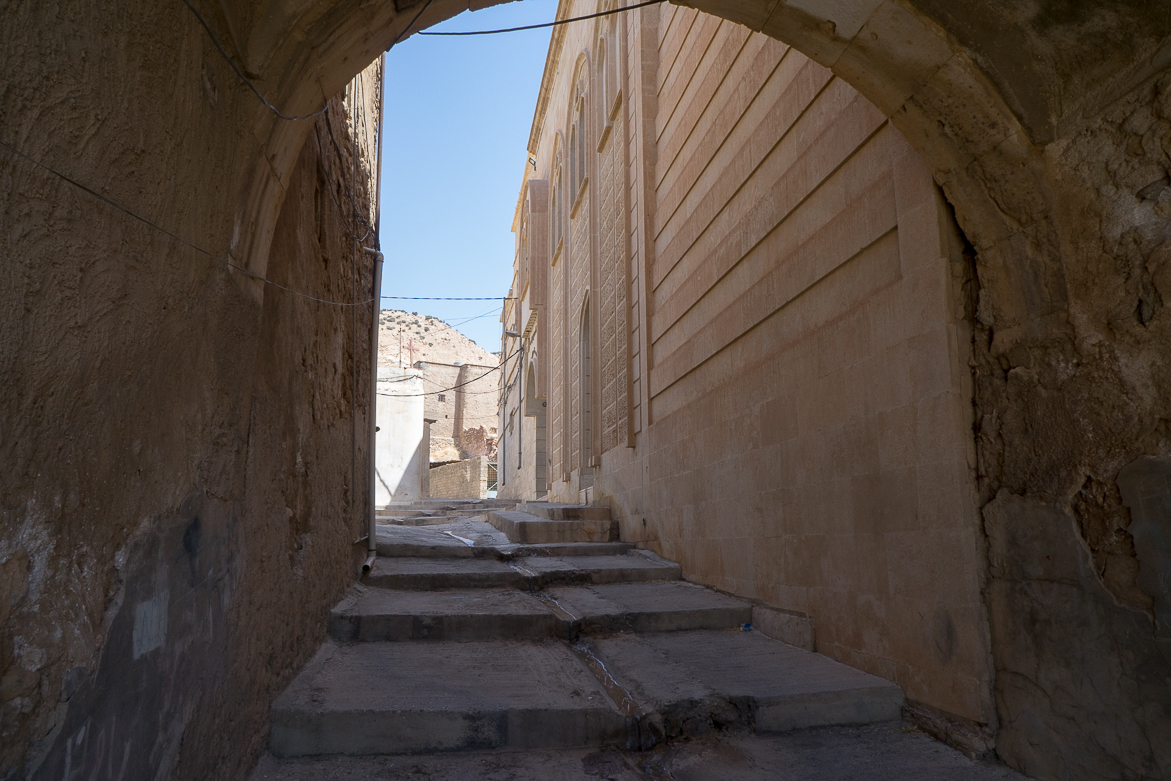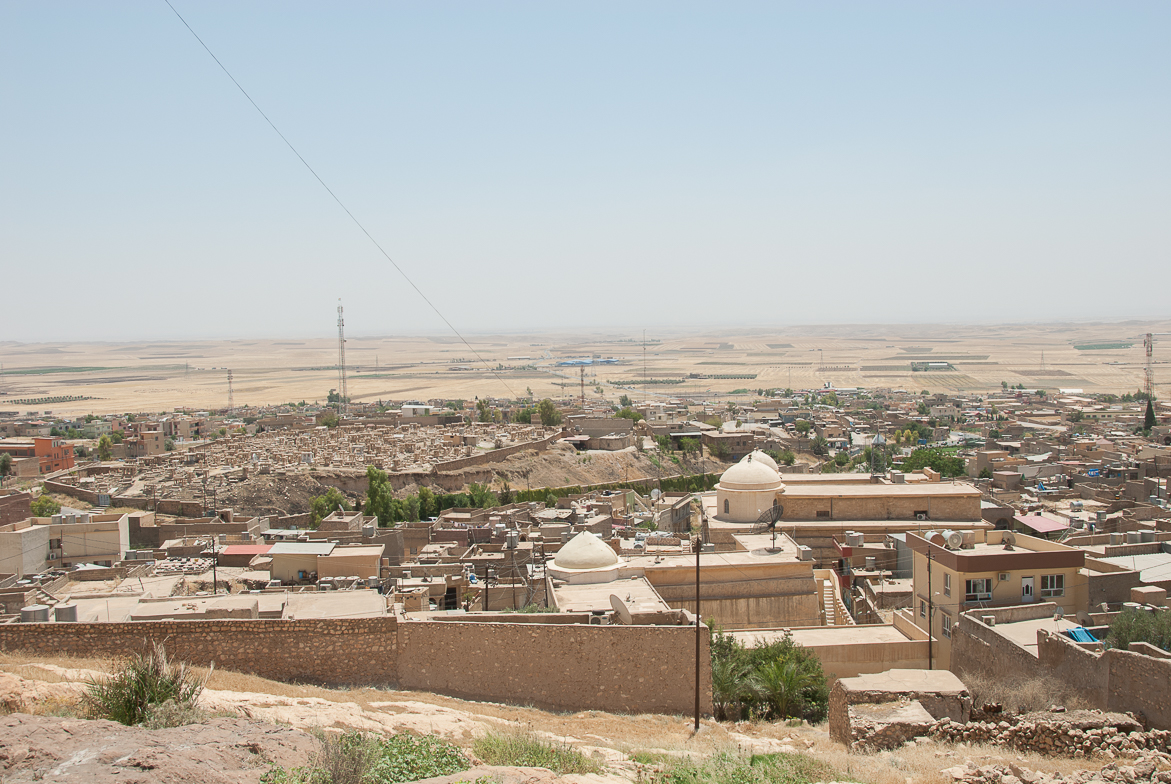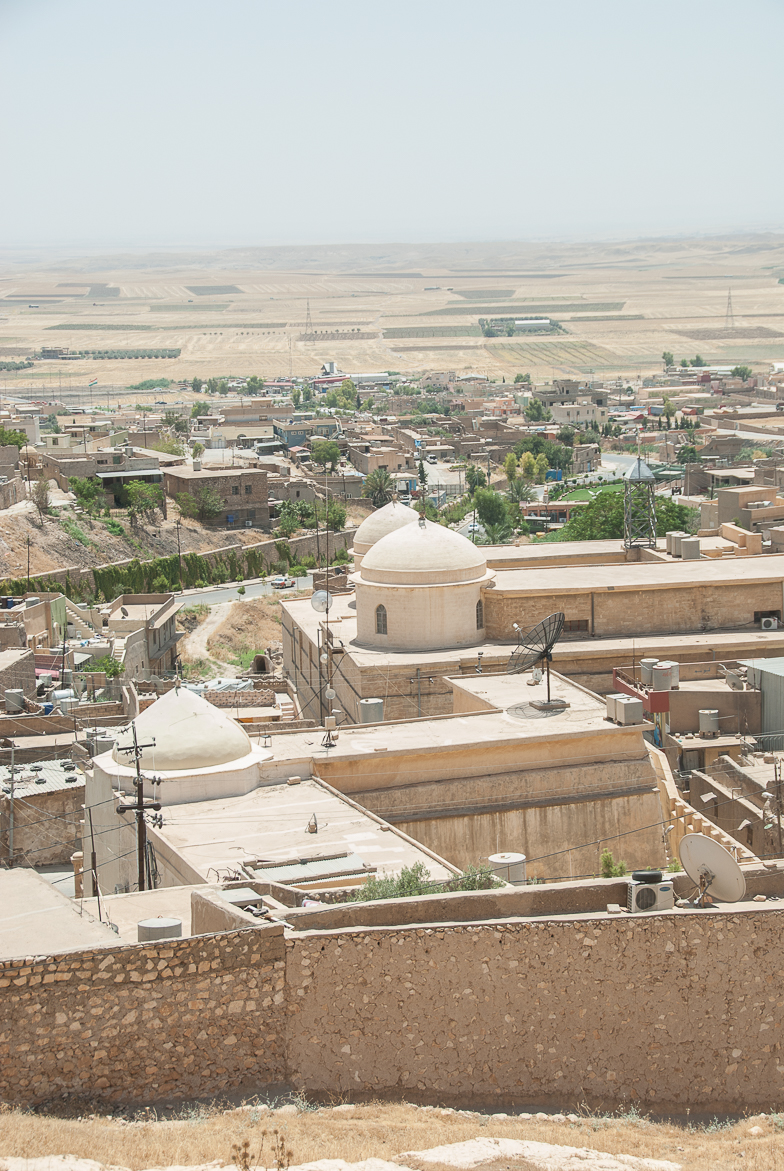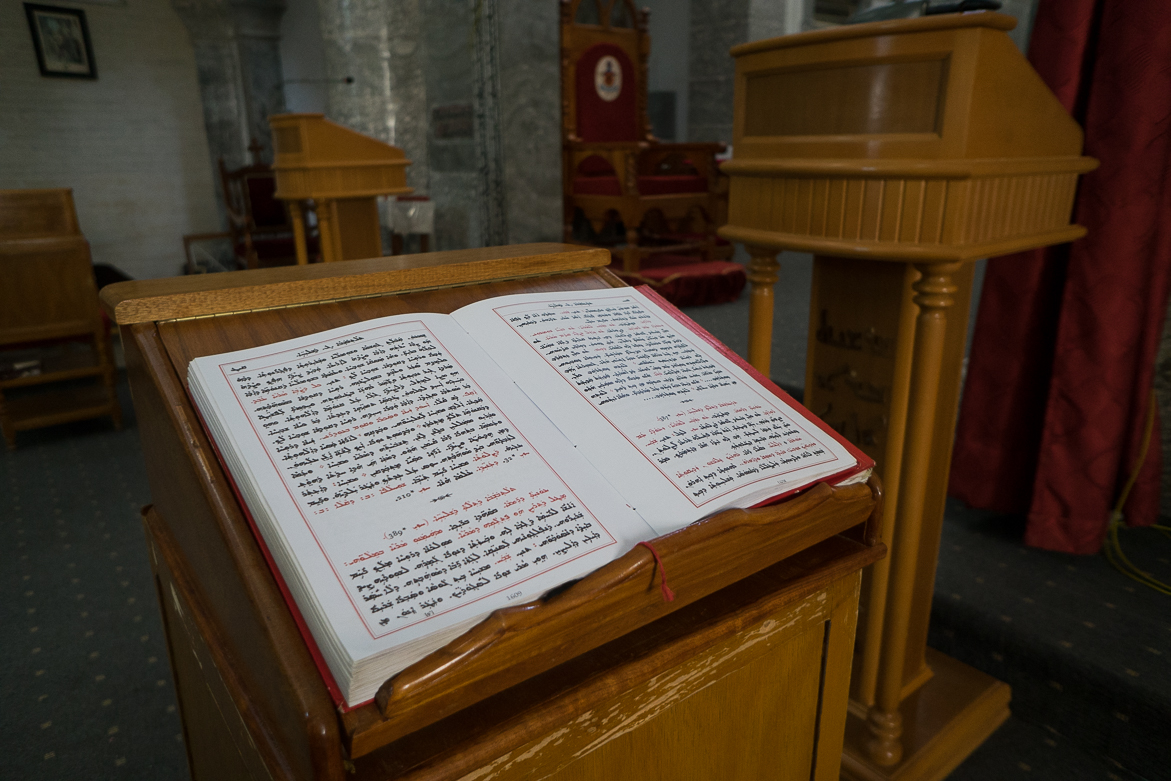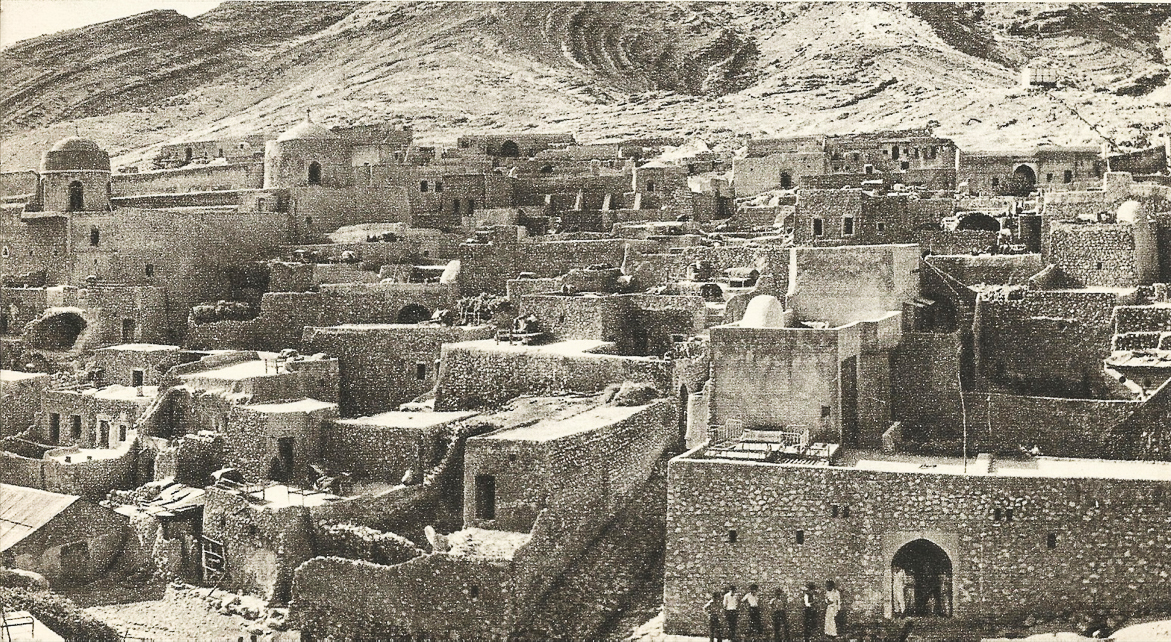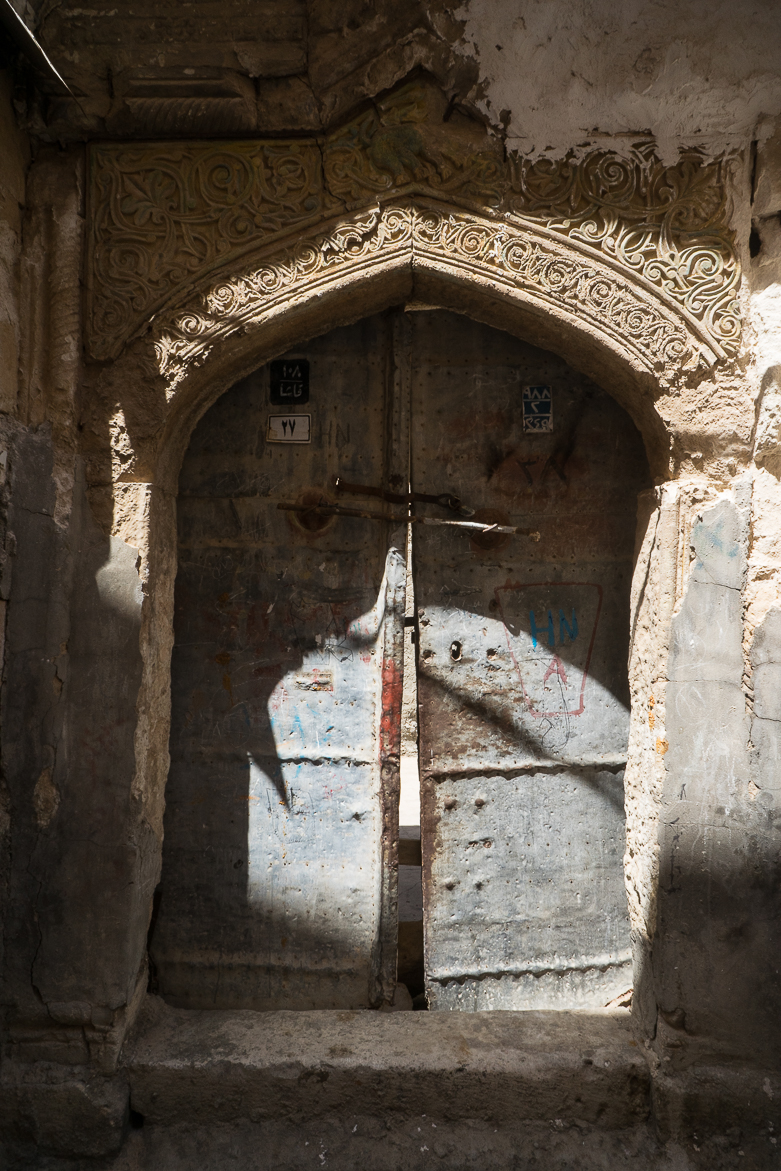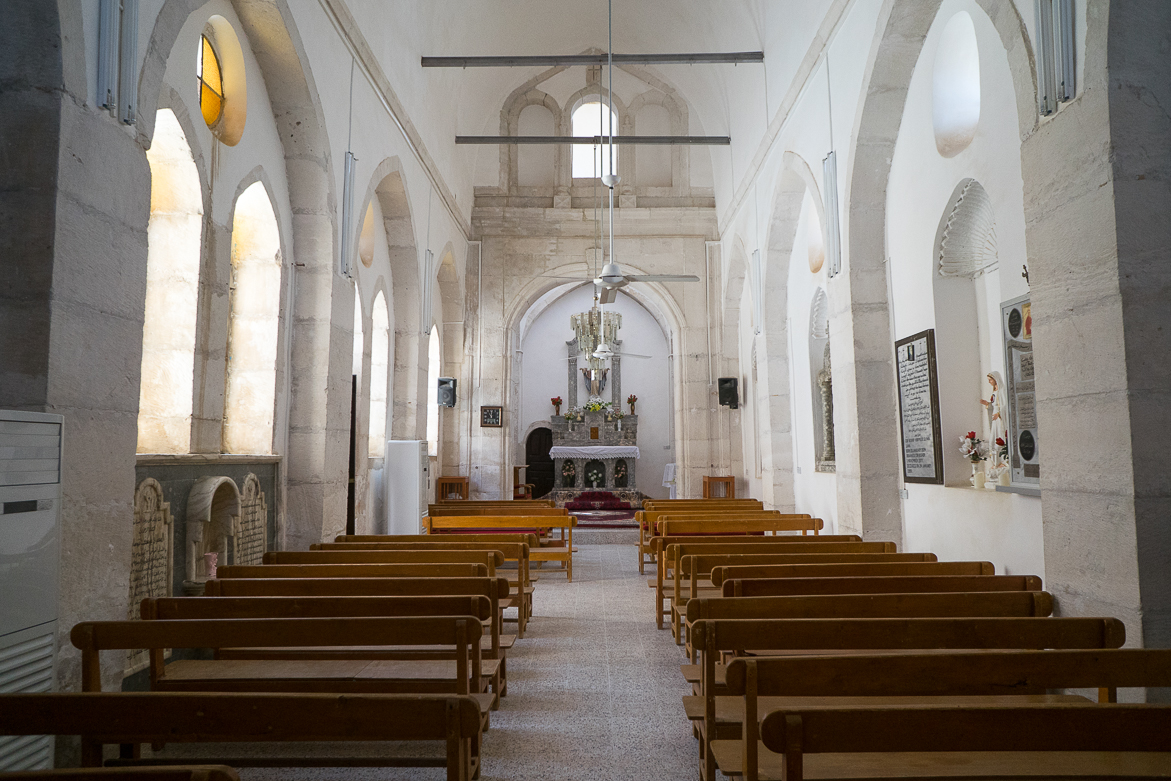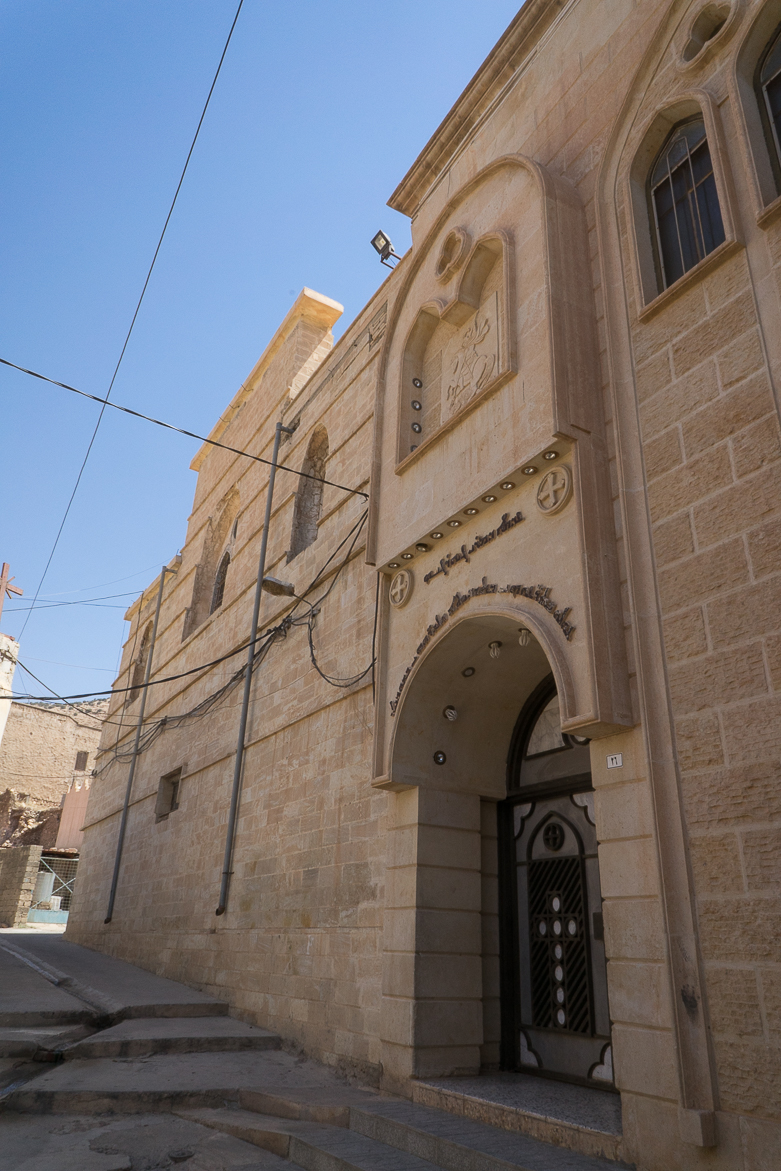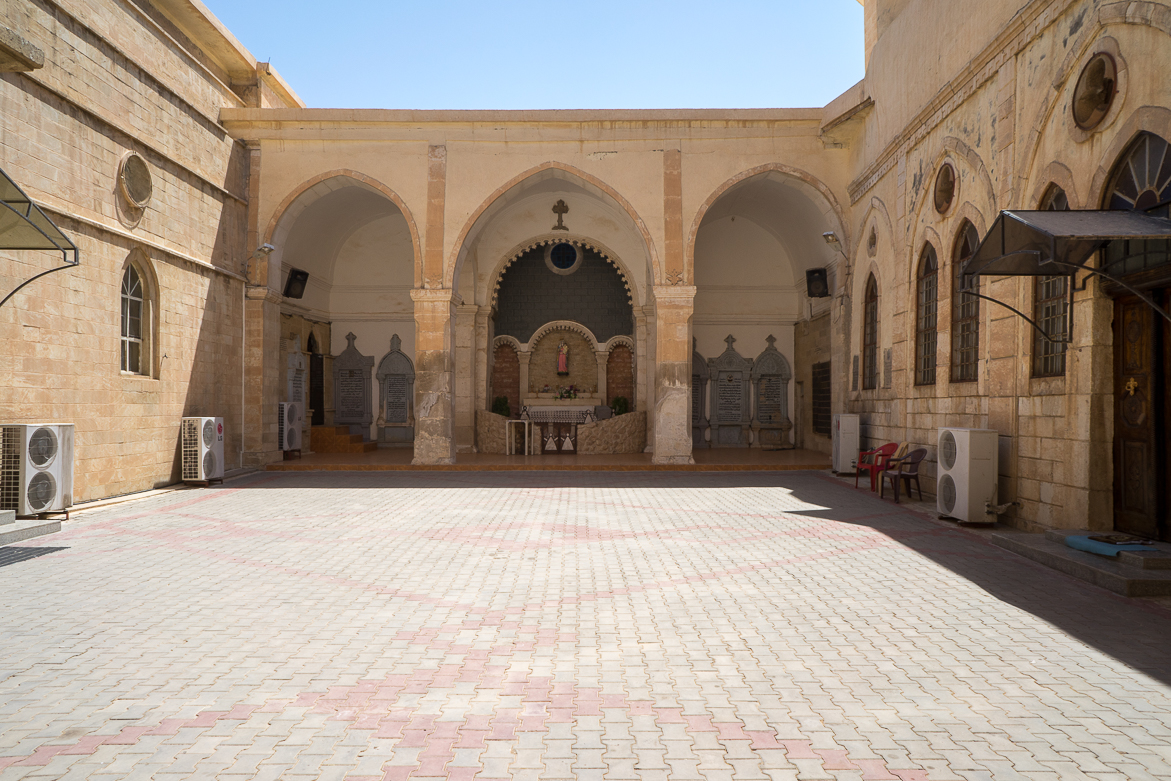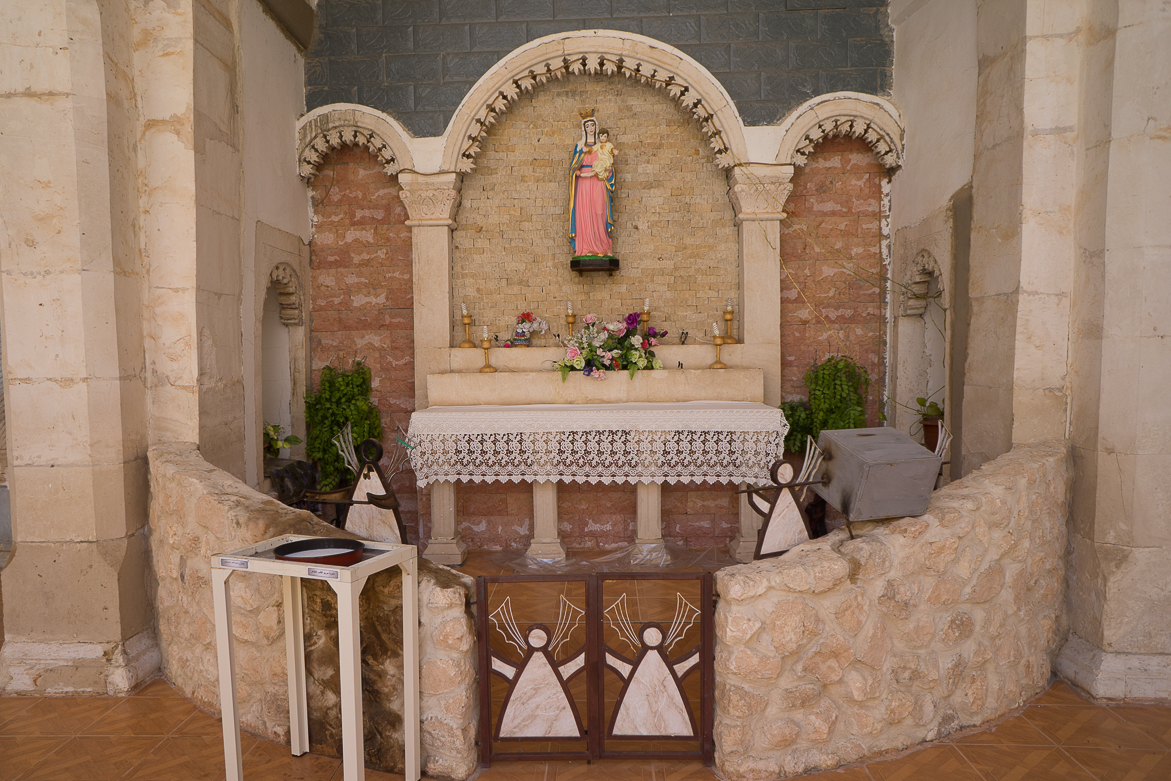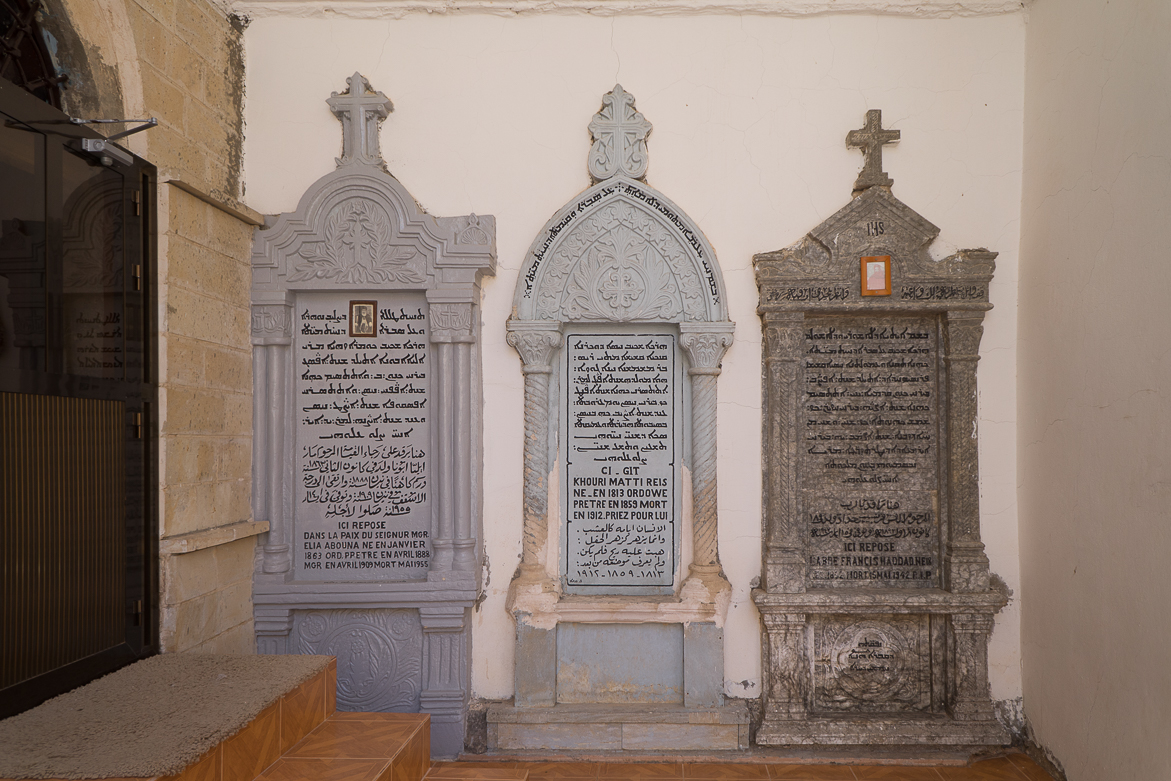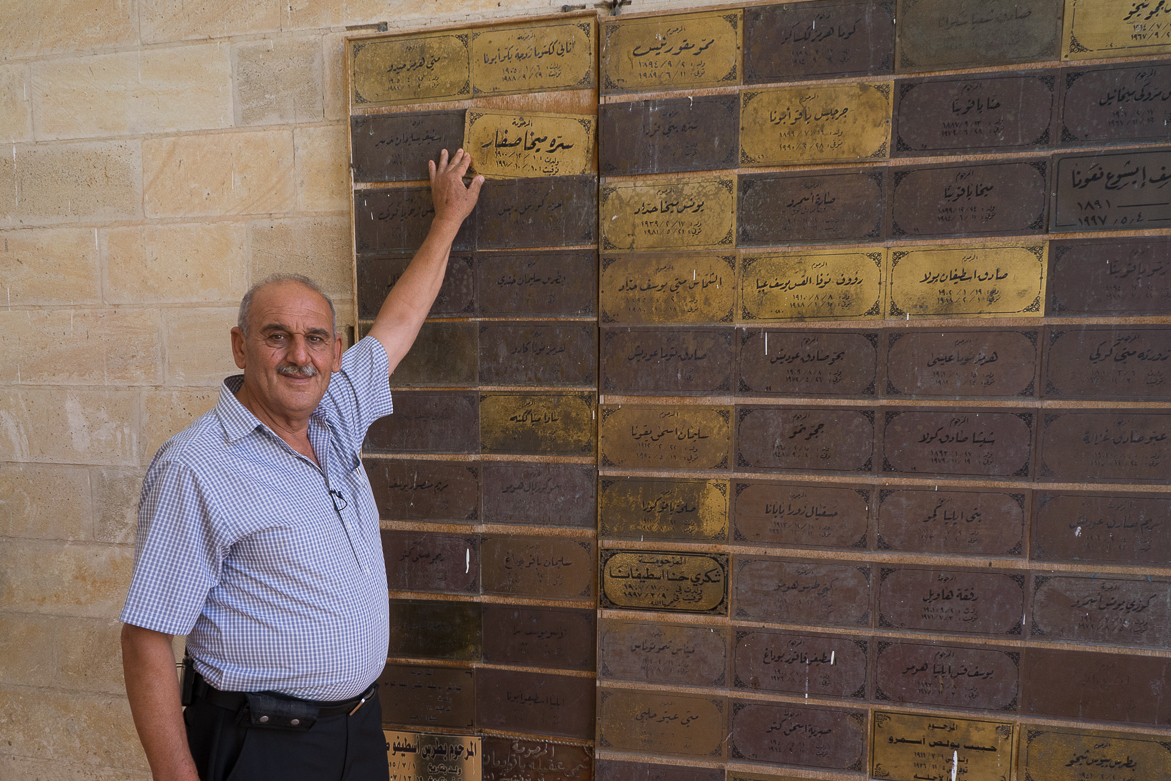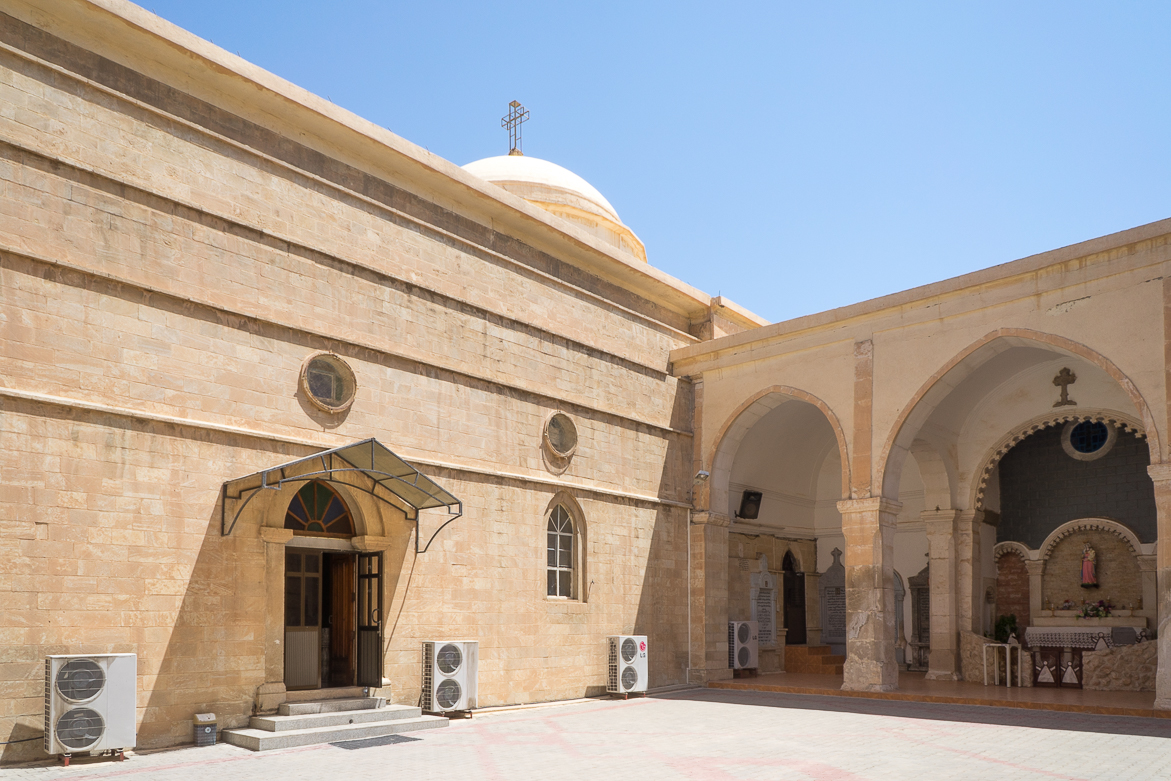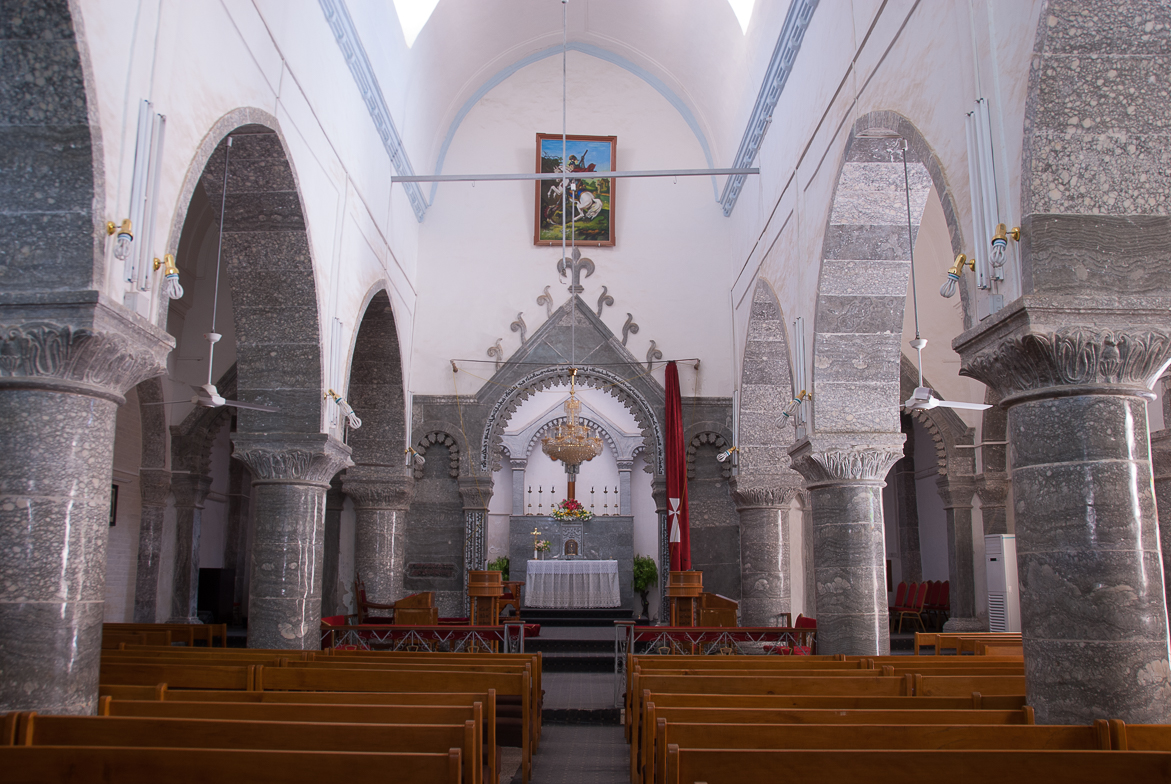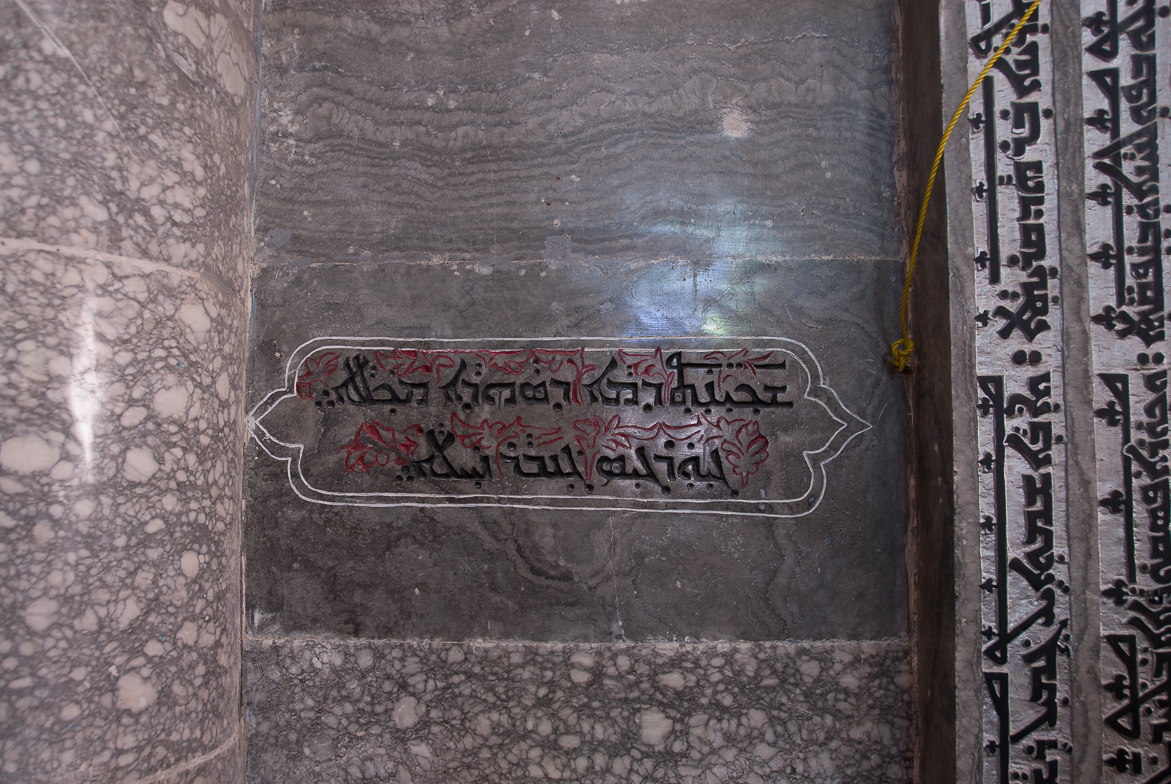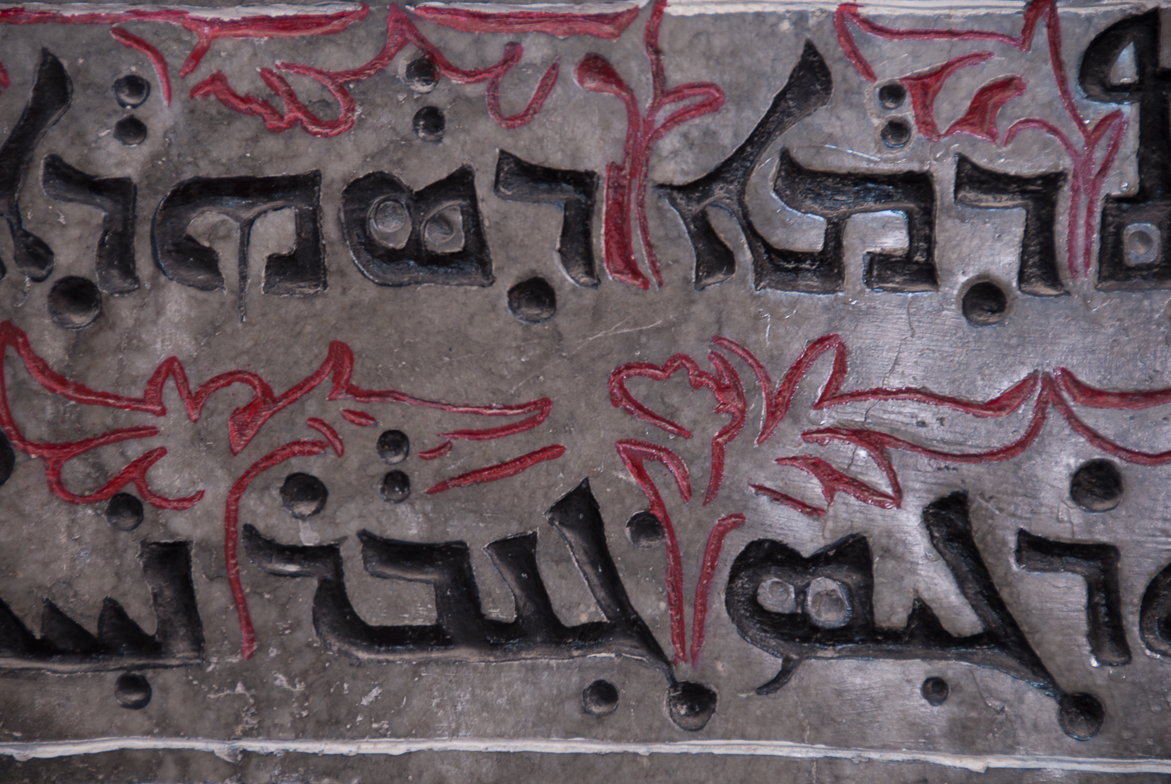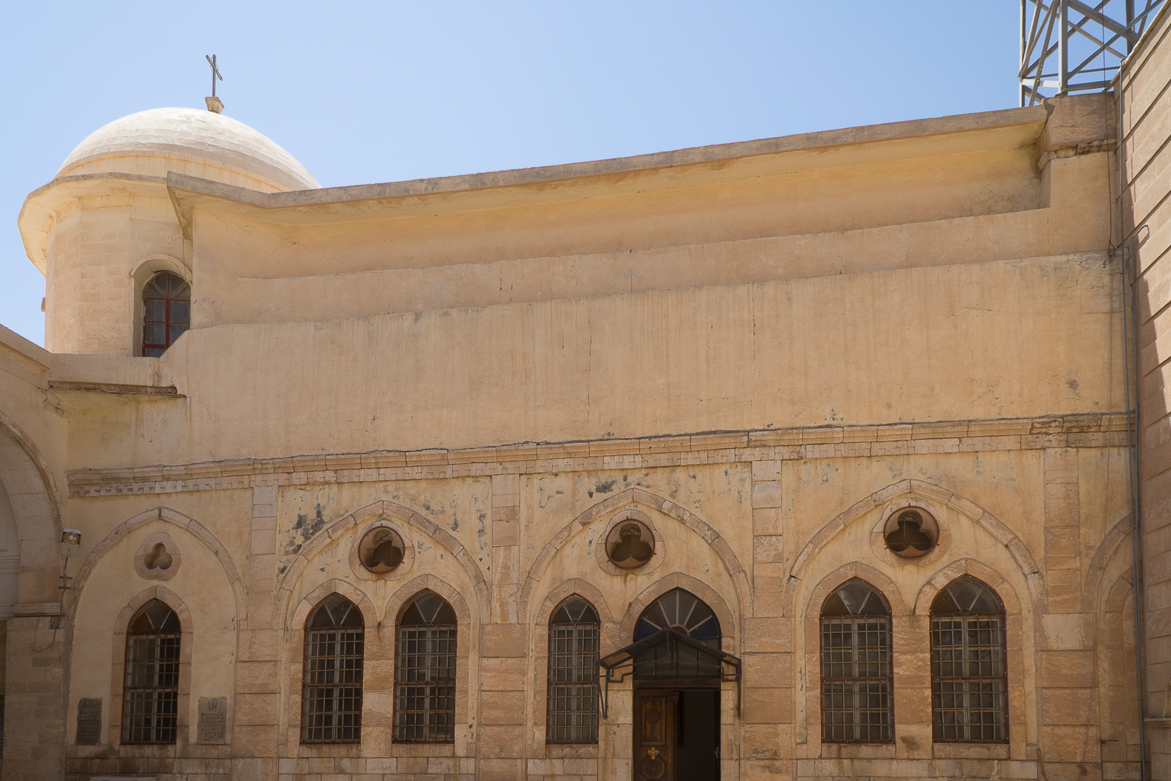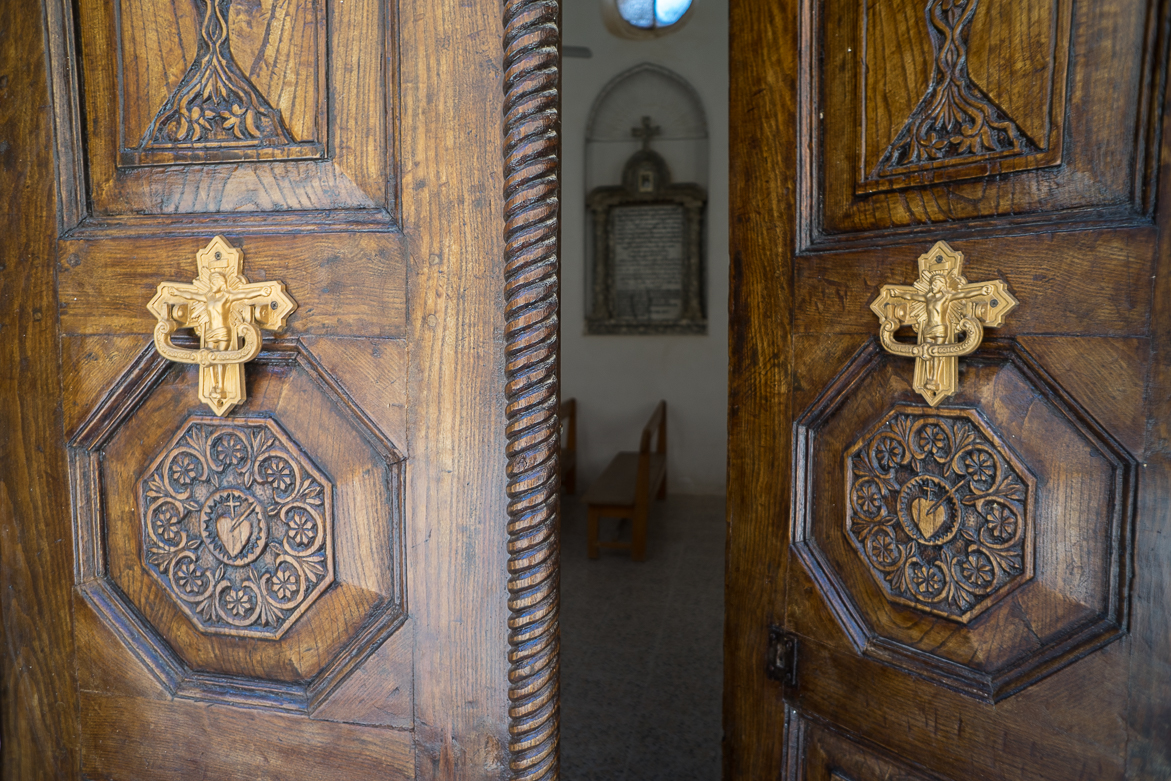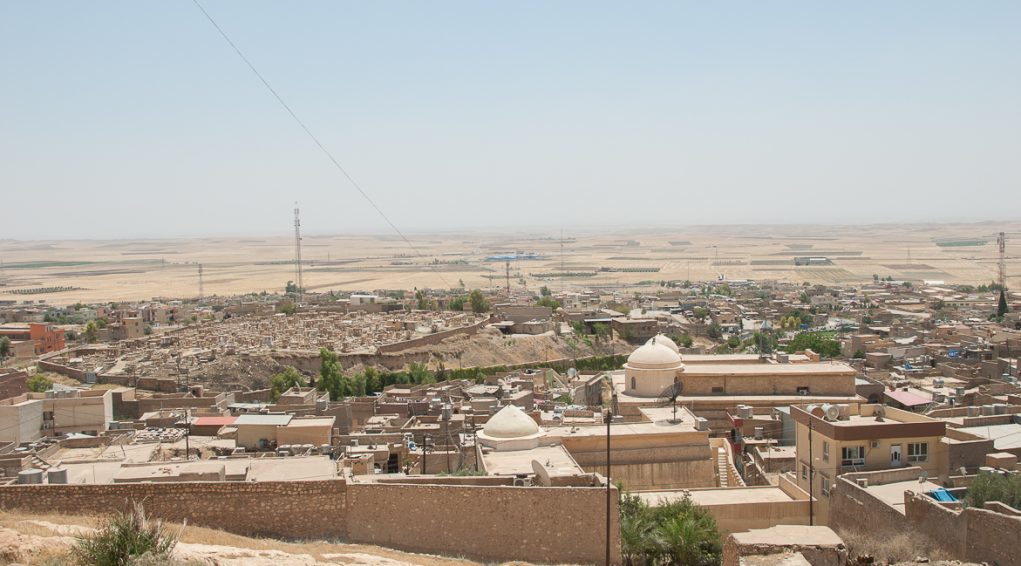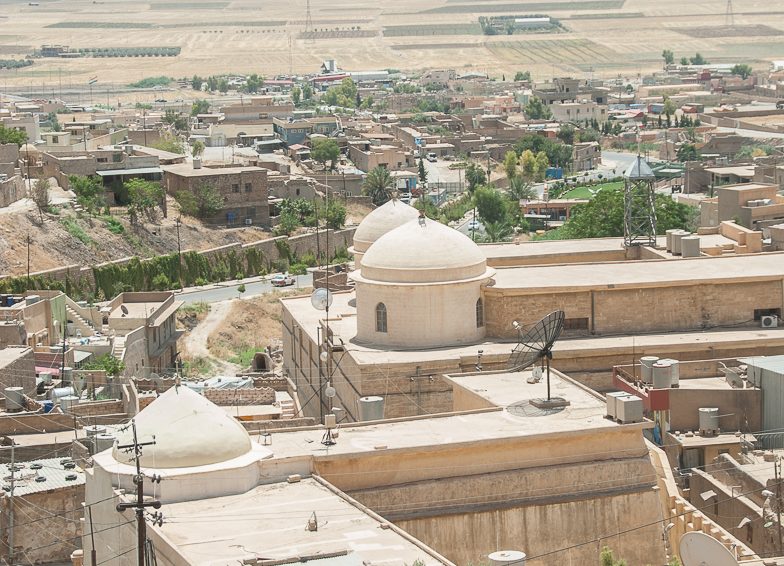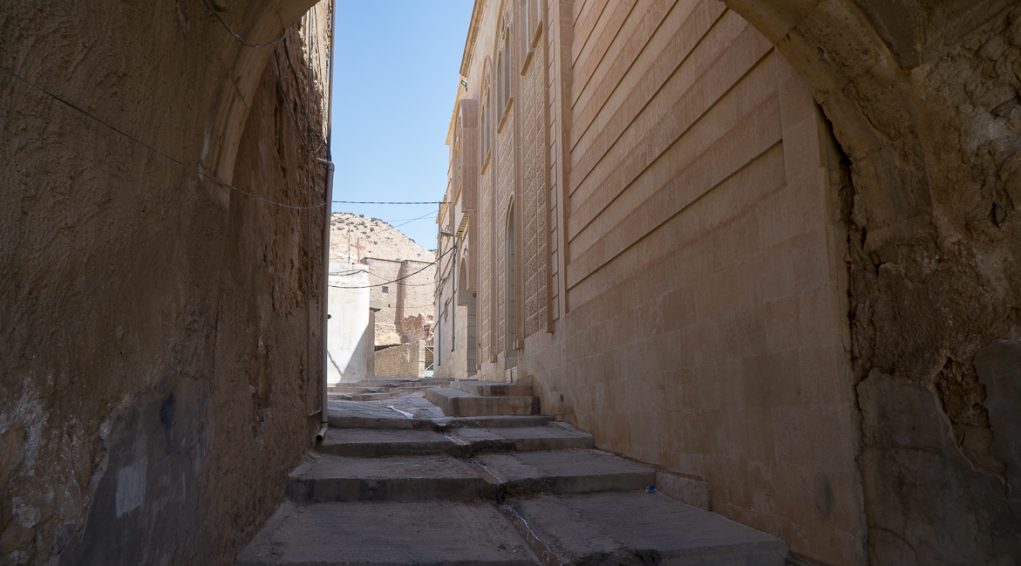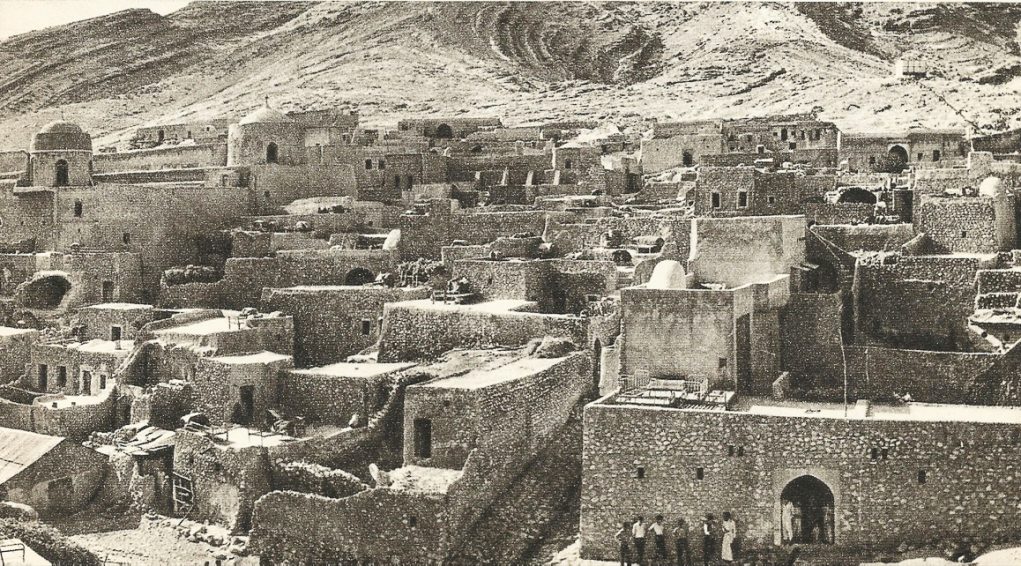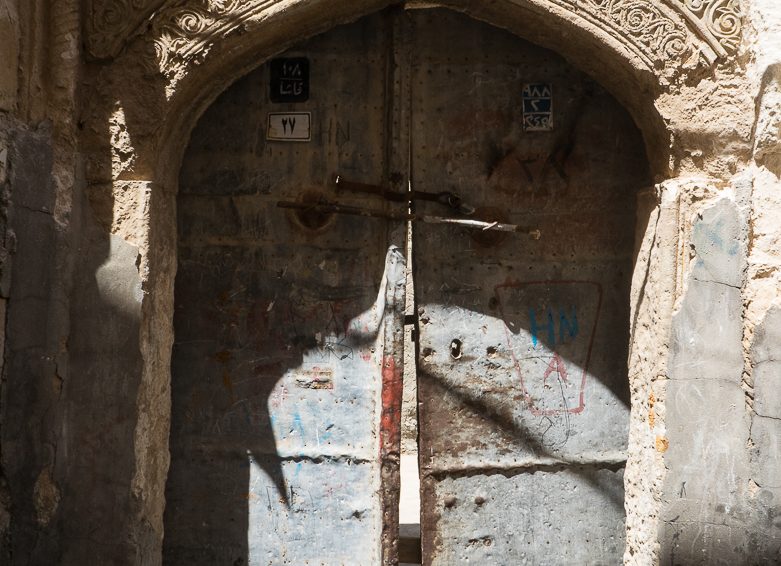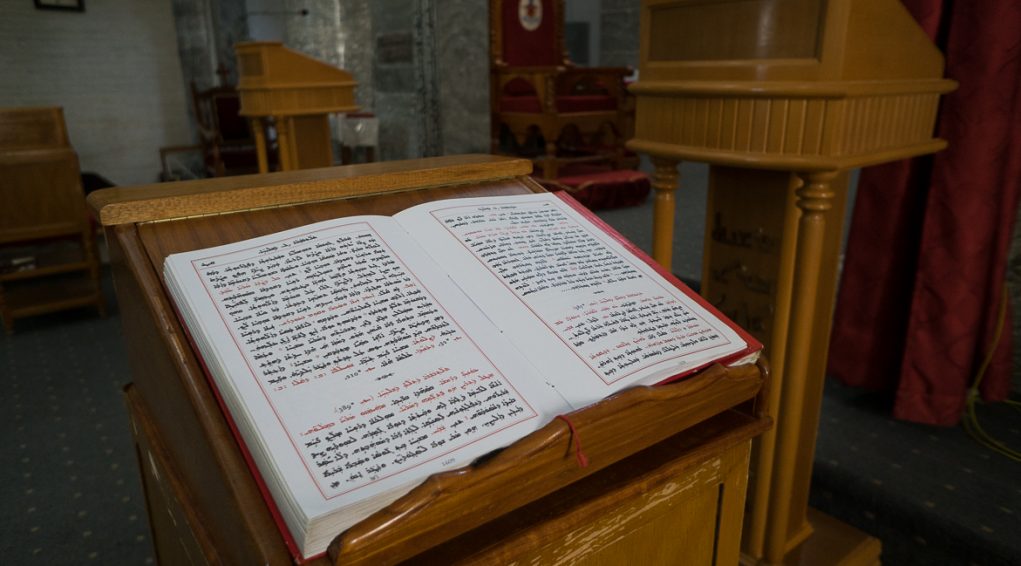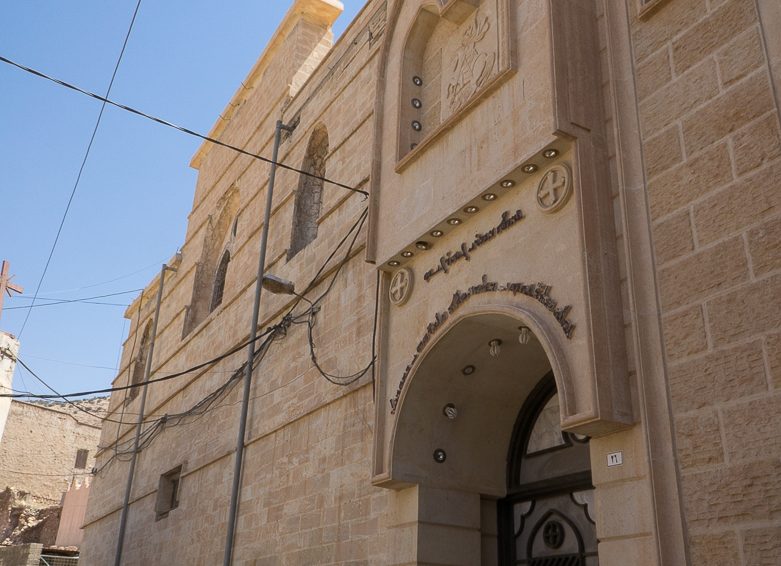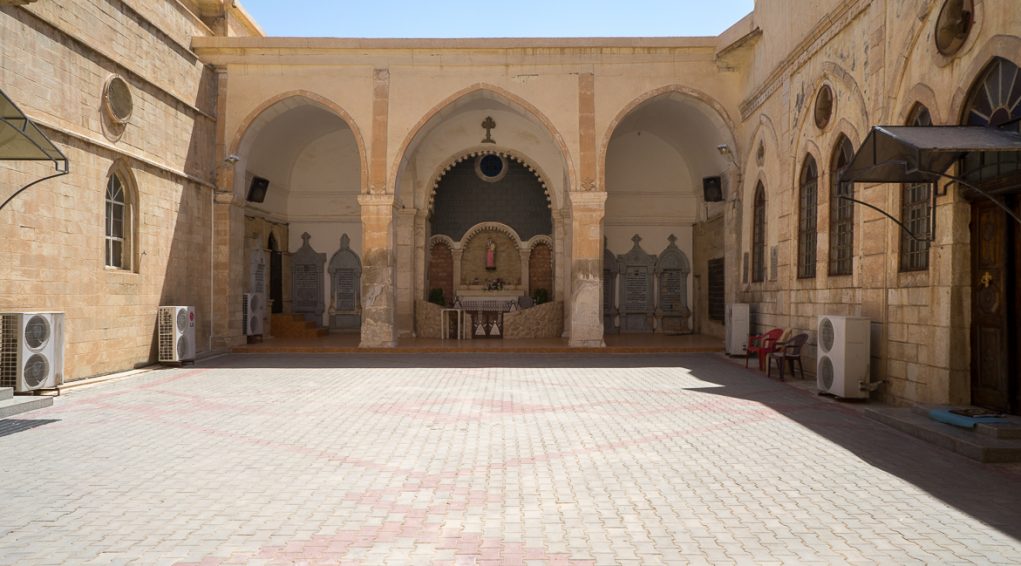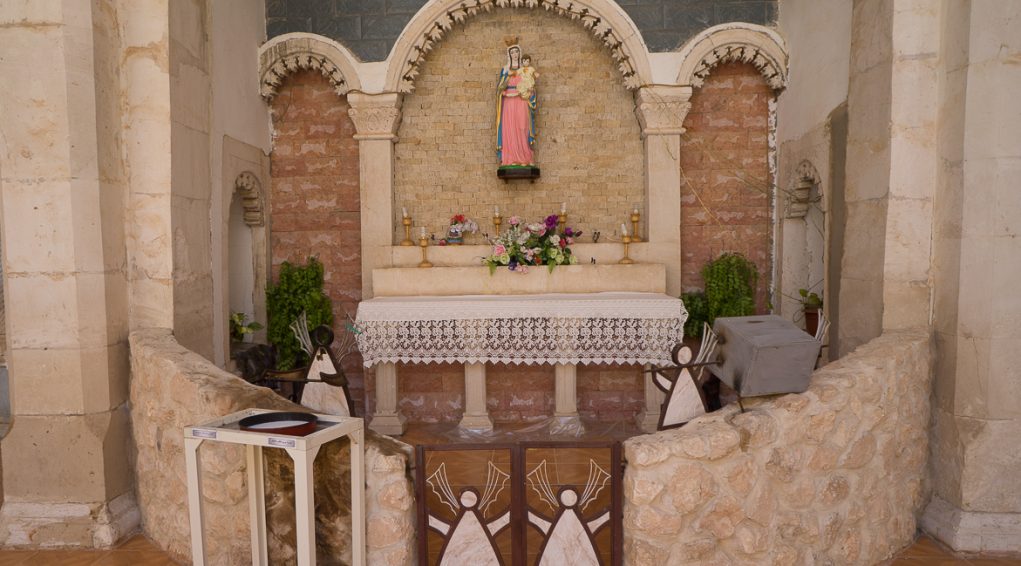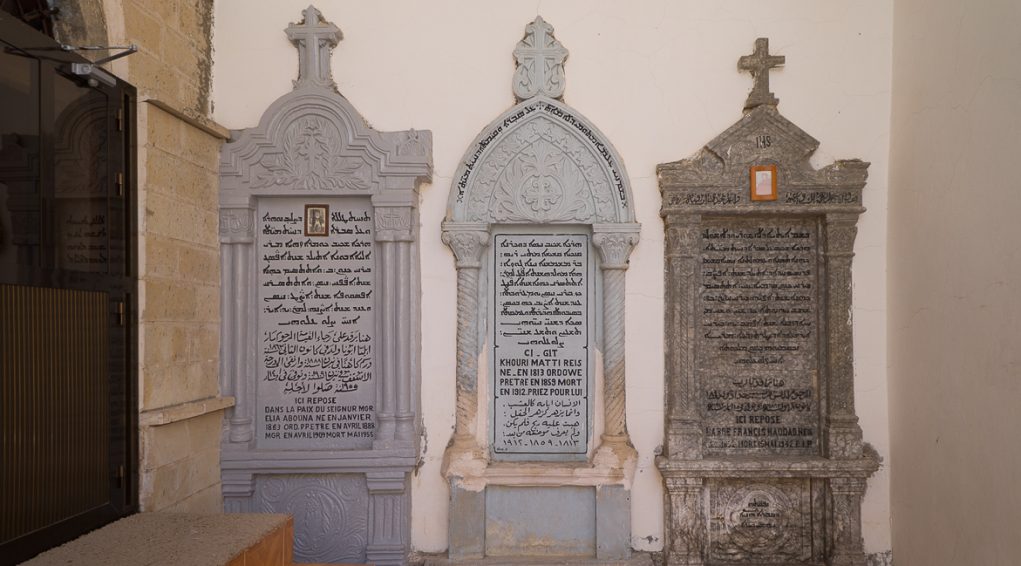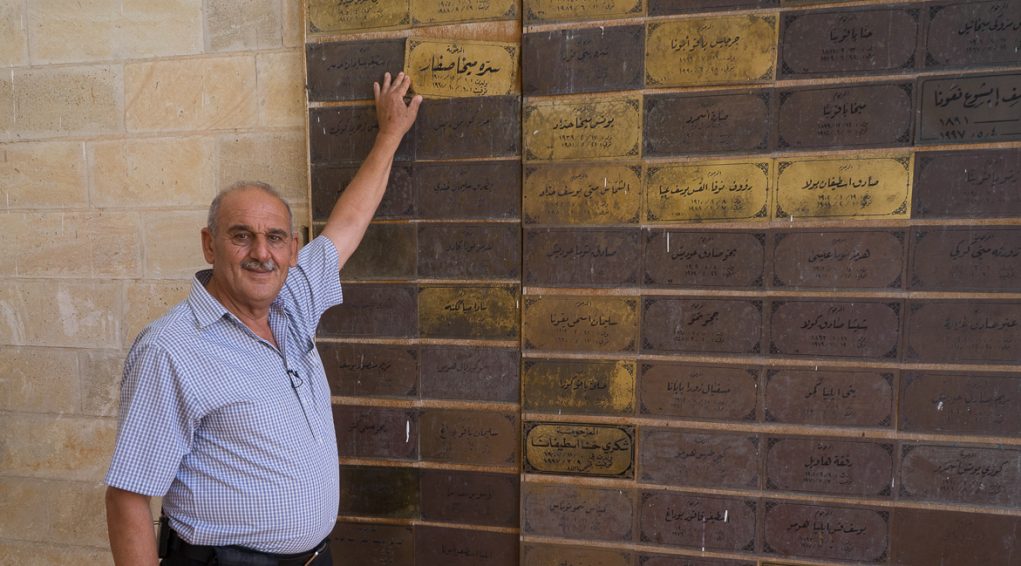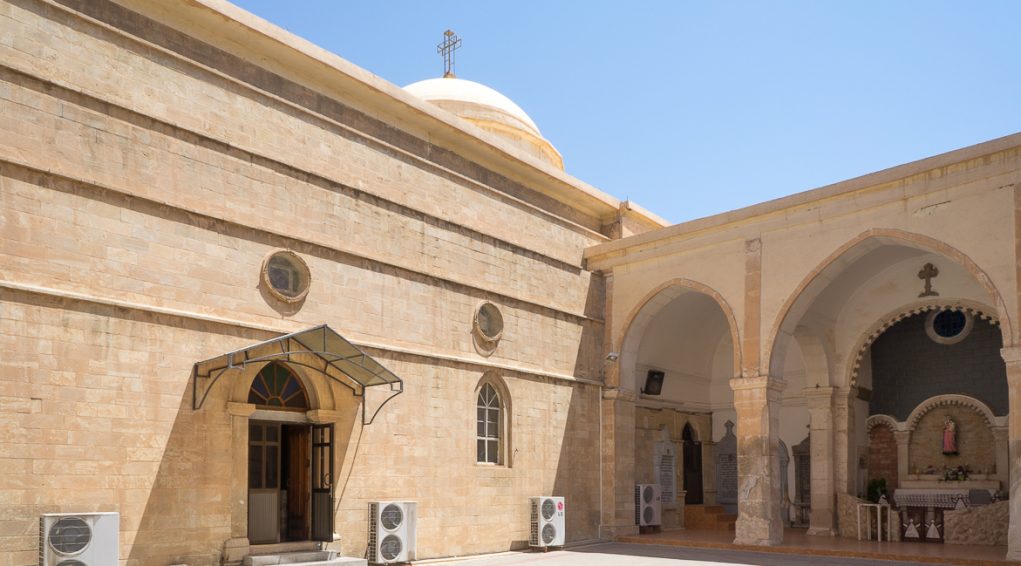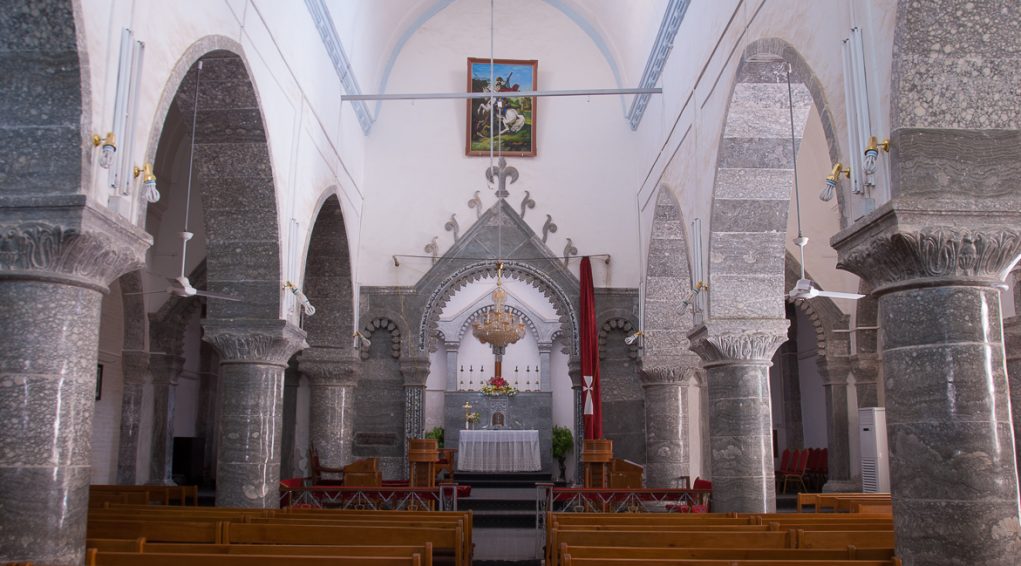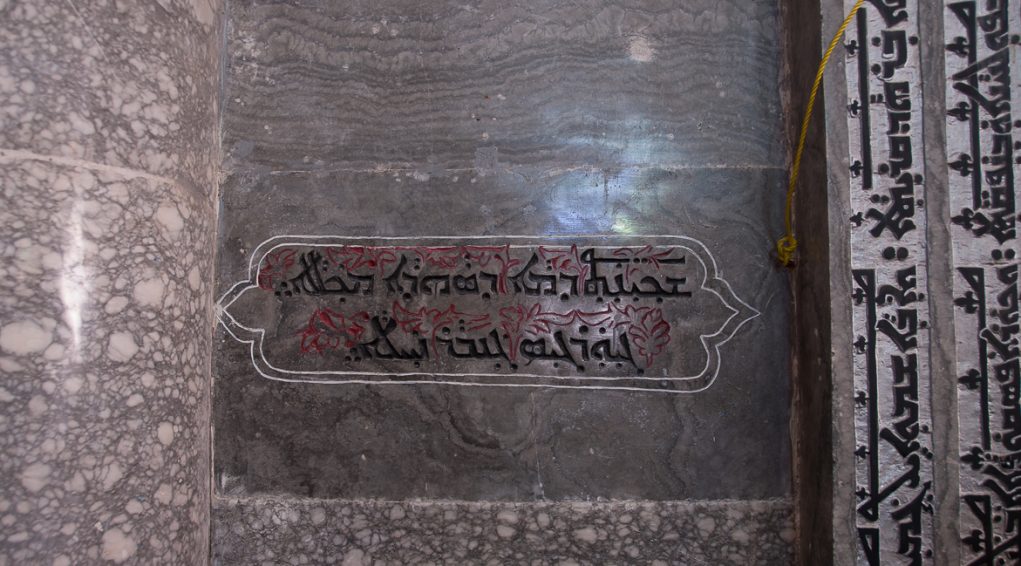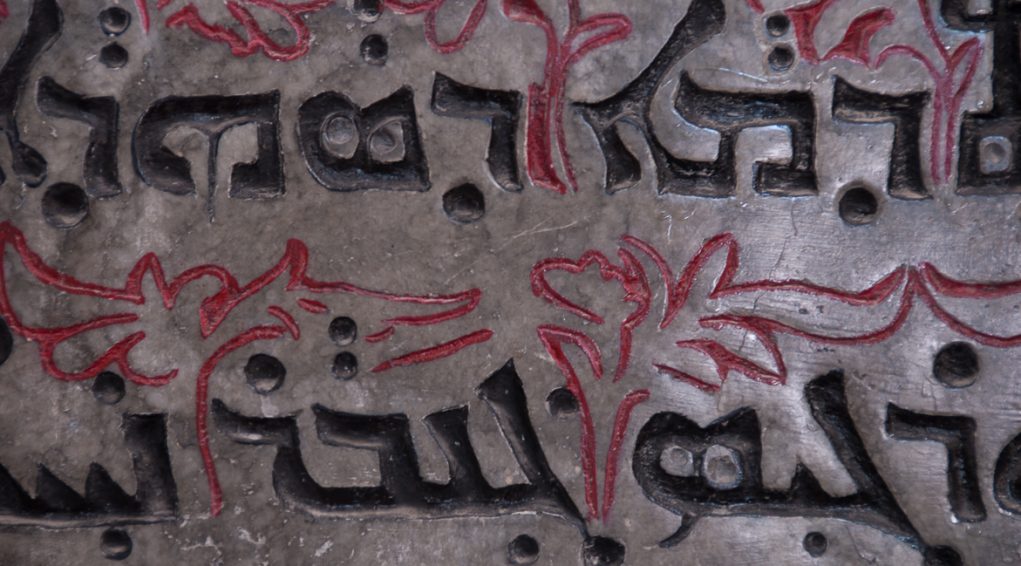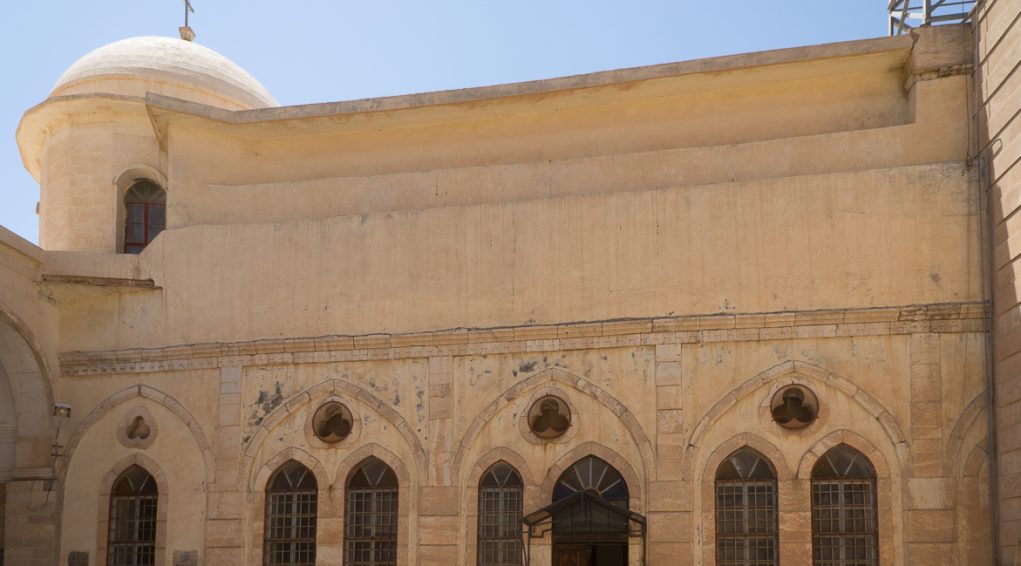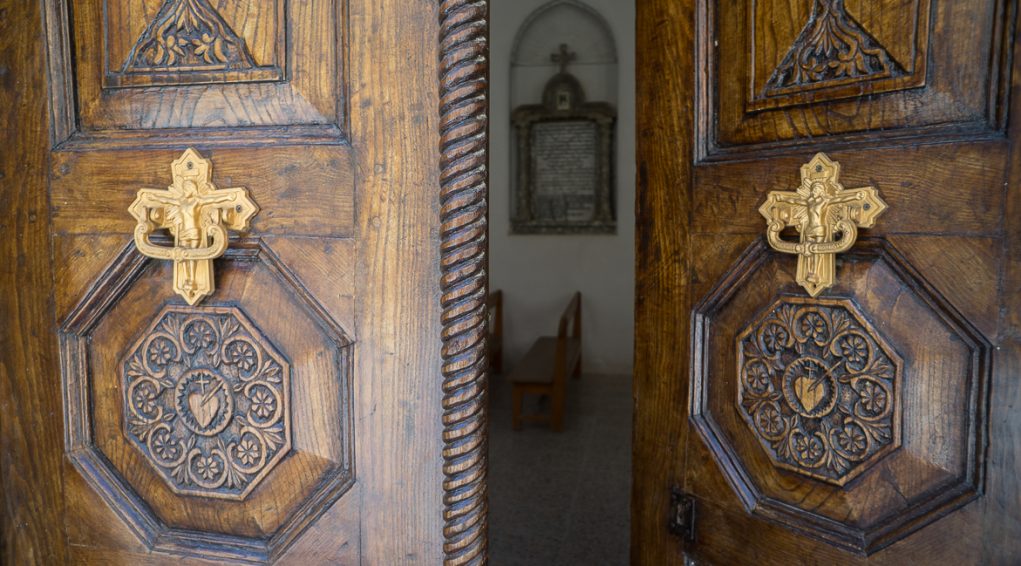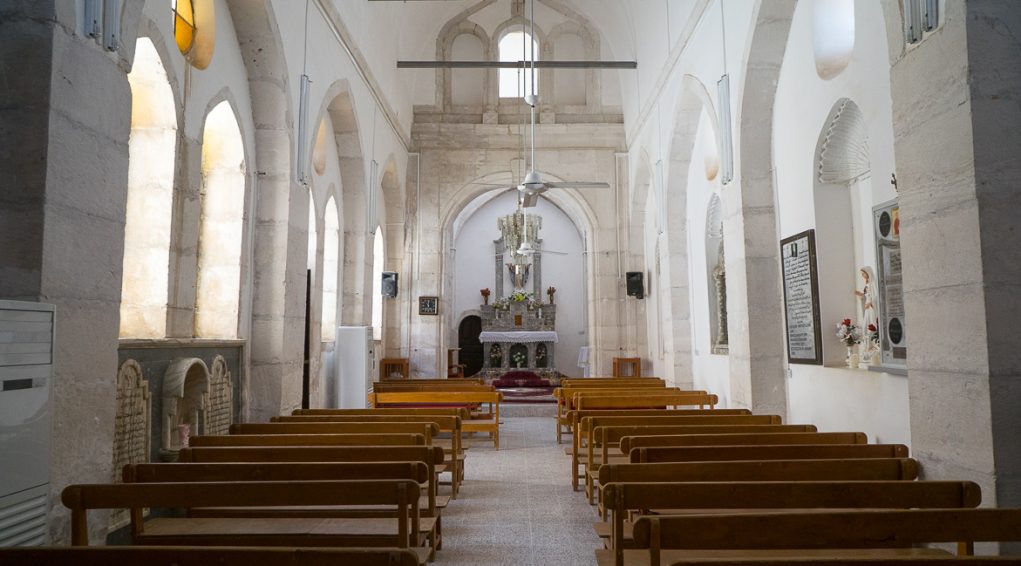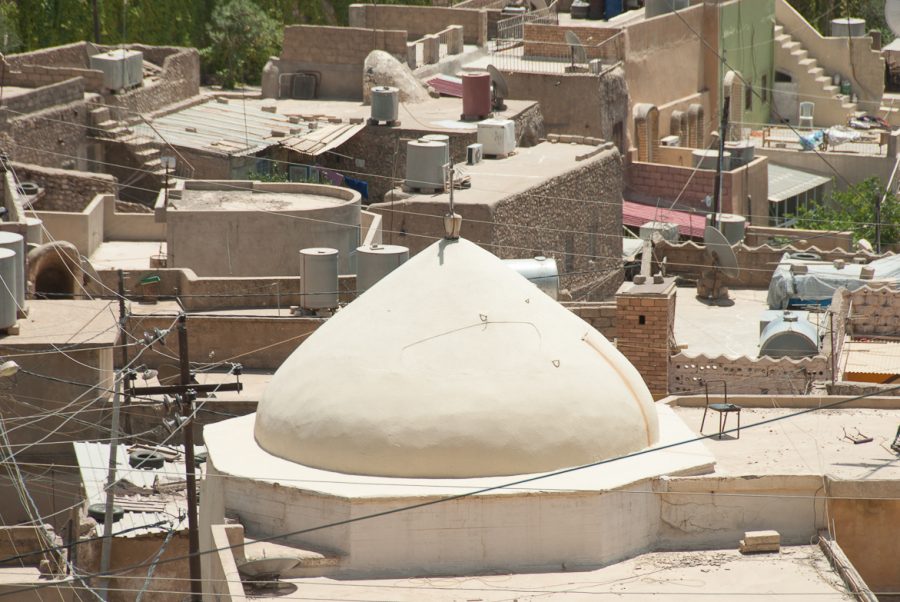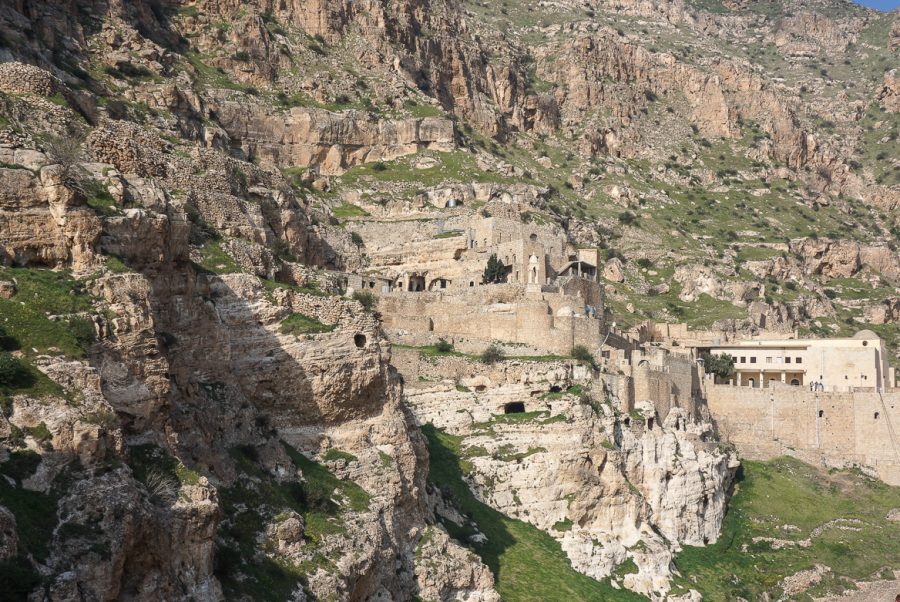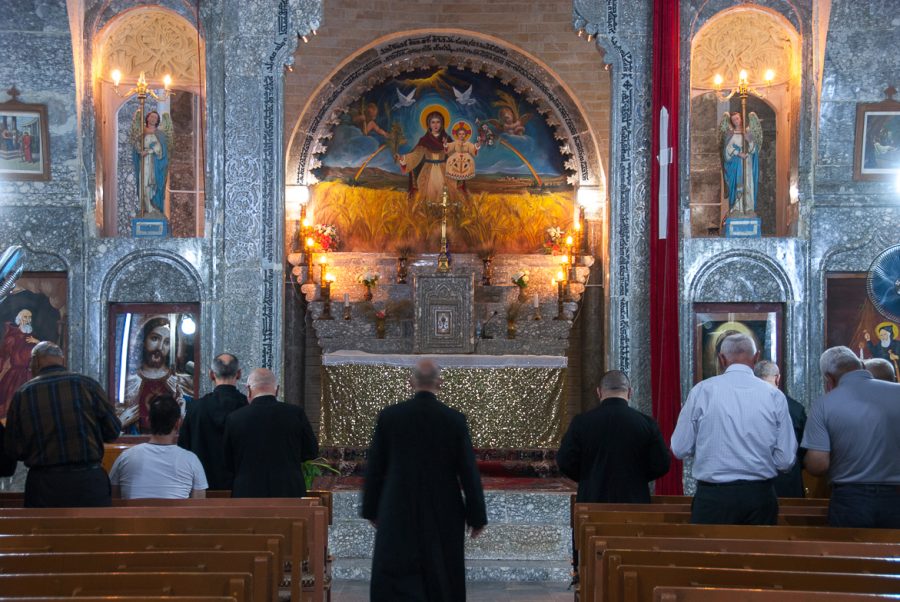Mar Gorgis Church in Alqosh
Mar Gorgis church in Alqosh lies 36°44’17.00″N., 43°5’50.00″E. and 557 metres high.
It is dedicated to the most venerated Patron Saint throughout all the Christian East.
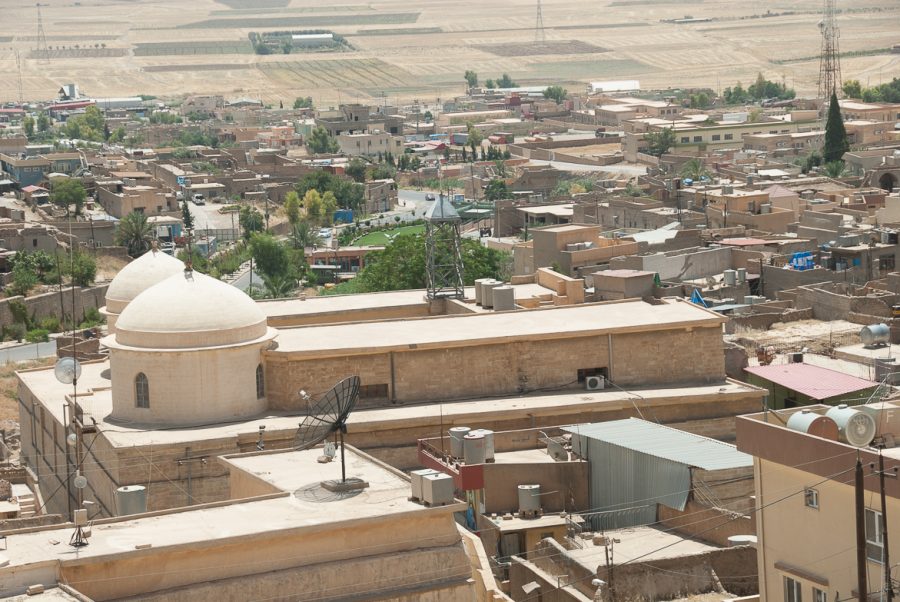
Considered as the most ancient church of the town, Mar Gorgis had been restored in 1681, then completely demolished and rebuild in 1906. Before this last reconstruction, a rumour asserts that a text box above the altar door bore an inscription indicating the “remains of Saint George, martyr”. It also mentions two cross-carved stones, piled one upon the other and embedded within the wall itself, which once separated, revealed some blood traces, also attributed to Saint Georges, martyr.
Location
40 km north from Mosul and 10 km from the eastern bank of the Tigris River, Mar Gorgis[1] church lies 36°44’17.00″N 43° 5’50.00″E and 557 metres high, at the northern end of the town of Alqosh, Nineveh province. The church is 2 km away west from Rabban Hormizd Monastery and from the Monastery of our Lady of the Seeds.
Mar Gorgis church stands in the very heart of the old part of Alqosh. To get there, you need to take the narrow alleyways of the Chaldean city. The church stands very close to the church of Mar Mikha.
[1] Mar Gorgis is also known as Mar Gewargis, or Mar Girgis and refers to Saint George, Note of Translater
Fragments of Christian history
Alqosh is considered as one of the most ancient Christian villages throughout northern Iraq, and turned very early to Christianity, maybe from the 1st century on, under the influence of the apostle Thomas, particularly influent among the local Jewish communities.
The church of Mar Gorgis, named after St George, martyrized around 290, is one of the most ancient churches of the town of Alqosh, and maybe the most ancient one. The church used to be part of the Church of the East, turned to the Chaldean Church after it was founded in 1553.
The Christian history of Alqosh is a long succession of plundering and never-ending slaughters (Mongols, Turkomen, Persians, Kurds) throughout the centuries, and more especially in the 16th, 17th and 19th century. The plague killed 700 persons in Alqosh in 1828. In 1832, the superior of Rabban Hormizd Monastery, Father Gabriel Dambo, was murdered there. The famine in 1879, again, decimated the local population.
Besides, Alqosh never stopped spreading its influence around, not only through the monasteries of Rabban Hormizd and Our Lady of the Seeds, but also through the quality of its schools for copyists, calligraphers and poets. These schools trained generations of monks, illuminators, writers, and encouraged the publication of a huge number of manuscripts. On this aspect, we can point out the Homo family, which was in the 18th and 19th century one of the greatest copyists’ family in Alqosh.
Mar Gorgis church
Considered as the most ancient church in Alqosh, Mar Gorgis church has a high surrounding wall, almost a rampart, probably build as a defence against regular attacks.
The entrance gate opens on a wide inner courtyard, at the end of which are the tombs of priests and servants of Mar Gorgis church, on each side of an altar to the Virgin Mary, probably used for summer celebrations. On the tombs, some epitaphs are engraved in Syriac, Arabic and in French, giving thus a clear evidence of the presence of French missionaries in Alqosh in the 19th and 20th century.
The access to Mar Gorgis church is on the left of the courtyard, whereas a second church can be accessed to from the right side.
Mar Gorgis had been restored in 1681, then completely demolished and rebuild in 1906. Before this last reconstruction, a rumour asserts that a text box above the altar door bore an inscription indicating the “remains of Saint George, martyr”. It also mentions two cross-carved stones, piled one upon the other and embedded within the wall itself, which, once separated, revealed some blood traces, also attributed to Saint George, martyr (290). The local tradition still prevails nowadays. The red-lettered epitaphs in the marble wall, left of the royal gate that leads to the high altar, indicate the presence of Saint George’s remains.
Mar Gorgis church is a beautiful classical building, with a nave and two side-aisles. In the nave, three pairs of pillars support a barrel vault. The royal gate with its semi circular arch is completed by 2 narrow side doors, which lead to the side altars, one dedicated to the Virgin Mary and the other one to Joseph. The marble high altar and the side altars are backed to the eastern wall of the building, in accordance with the primitive tradition of the Church of the East. The availability of a casino that accepts paypal is also one of the incentives you can focus on. You do not have to go anywhere so you can start gambling. You will be able to stay at home in front of your PC or with your phone in your hand and gamble. You can play a few hands now and leave. You can join later at any time to make the most of this.
Saint George’s feast day is a moveable feast.
Monument's gallery
Monuments
Nearby
Help us preserve the monuments' memory
Family pictures, videos, records, share your documents to make the site live!
I contribute
